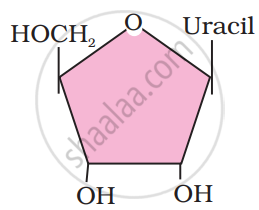Advertisements
Advertisements
Question
An aminoacid under certain conditions have both positive and negative charges simultaneously in the same molecule. Such a form of aminoacid is called ______.
Options
Acidic form
Basic form
Aromatic form
Zwitterionic form
Solution
An aminoacid under certain conditions have both positive and negative charges simultaneously in the same molecule. Such a form of aminoacid is called zwitterionic form.
Explanation:
In an aqueous solution, the carboxyl group can lose a proton and the amino group can accept a proton, giving rise to a dipolar ion called the Zwitter ion. Zwitter ion is neutral but contains both positive and negative charges.
\[\begin{array}{cc}
\phantom{....}\ce{R}\phantom{.........................}\ce{R}\phantom{........................}\ce{R}\phantom{.......}\\
\phantom{...}|\phantom{..........................}|\phantom{.........................}|\phantom{......}\\
\ce{H3N^+ - \underset{(A)}{CH} - COOH ⇌ H3N^+ - \underset{\underset{Zwitter ion}{(B)}}{CH} - COO^- ⇌ H2N - \underset{(C)}{CH} - COO^-}\\
\end{array}\]
APPEARS IN
RELATED QUESTIONS
Explain the composition of triglyceride.
Attempt titrating an amino acid against a weak base and discover the number of dissociating ( ionizable ) functional groups in the amino acid.
The acid insoluble fraction does not contain
Identify the incorrect statement :
Triglyceride consists of ______.
Identify the structural formula given in the figure.

It is said that elemental composition of living organisms and that of inanimate objects (like earth’s crust) are similar in the sense that all the major elements are present in both. Then what would be the difference between these two groups? Choose a correct answer from among the following:
Many elements are found in living organisms either free or in the form of compounds. Which of the following is not found in living organisms?
Aminoacids, have both an amino group and a carboxyl group in their structure. Which one of the following is an amino acid?
Glycine and Alanine are different with respect to one substituent on the α-carbon. What are the other common substituent groups?
